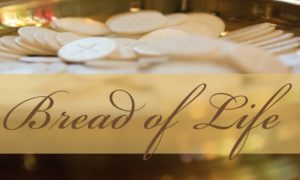
Grief
If you have attended Mass at Ascension since our church reopened, you have likely noticed some changes. If you are a parent, you may find it difficult to explain these changes with your children while you are trying to come to terms with them yourself. If you are like many families, going to Mass may have been your first “outing” since the beginning of the quarantine. Church feels different — but everything feels different; people feel different; life feels different.
Perhaps you have experienced sorrow, disbelief, or even anger over the many, undesirable modifications. You may have expected to only feel joy upon returning to church, and perhaps you were surprised that your actual experience was more nuanced. Perhaps your personal reaction has been different from that of your spouse or children, and you are grappling with what is the “right” way to feel as you adjust to the new-normal. If any or all of this describes you or your family, you are likely experiencing grief.
Gratitude
Even though it may seem counter-intuitive, grief and gratitude are not mutually exclusive. In fact, the two realities are meant to work together. We are invited to hold our grief — our very real loss — in one hand, while holding our gratitude in the other hand. One experience does not diminish the other.
Grief over what we have lost, gives us an opportunity for gratitude. Perhaps we did not appreciate the smiling faces of fellow parishioners until they were covered in masks. Perhaps we did not enjoy singing until congregational praise was omitted. Grief sharpens our awareness, providing keen opportunity for gratitude for what once was (and eventually will be again!). Loss invites us to appreciate the gifts we possess. Perhaps Mass currently cannot be celebrated as we desire, but Mass IS celebrated; Jesus IS present; and we CAN receive Him. Grief reveals how much we have to be thankful for.
Grace
As we behold our own grief and gratitude, we are also called to have grace with others. Our highly politicized climate offers a variety of emotionally-charged opinions on the topic of reopening and public safety. Perhaps you disagree with friends, family members, or Facebook posts. Although we are not necessarily called to (nor is it possible to) agree with everyone on every topic, we are called to charity — to love all people at all times and to handle our differences with grace.
In the context of faith, we are also called to submit to authority with grace. Fr. Tom and Fr. Viet are called to submit to the direction of our Archbishop, who is called to submit to the direction of the Cardinals, Pope, and — ultimately — Jesus Christ. We exercise the virtue of obedience (one of the three evangelical counsels to which all Christians are called), when we graciously submit to the direction of our local priests. If you are a parent, you model the response that you want your children to have to your direction with your response to the direction given by our priests. Grace in obedience does not always mean agreeing, but it does mean following with grace.
Moving Forward
Look for Grief, Gratitude, & Grace articles (posted to Facebook, Mom Blog, and the Ascension bulletin) each week from the Ascension Family Life Ministry; we will explore some of the temporary changes in the Mass, in our community, and in our homes.
Other Articles from Grief, Gratitude, & Grace










